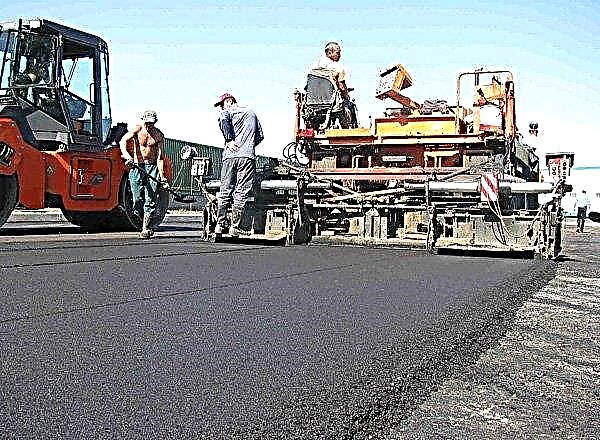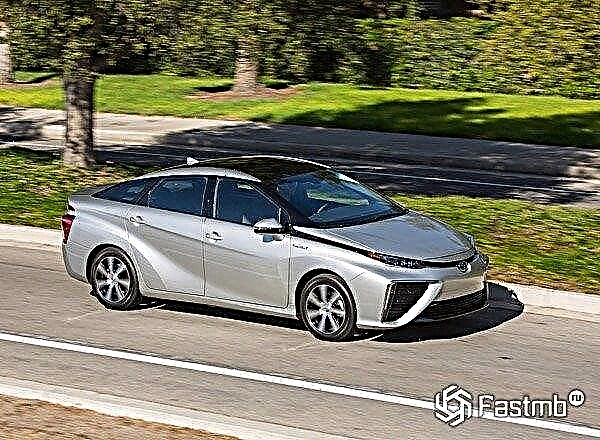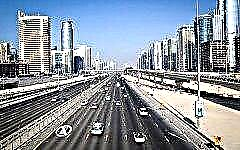

The content of the article:
- United Arab Emirates
- Singapore
- Switzerland
- Hong Kong
- Netherlands
- Japan
- France
- Portugal
- Austria
- USA
Experts from the World Economic Forum have studied the state of the automotive infrastructure in more than a hundred countries around the world to compile their annual competitiveness rating.
The Russians were pleasantly surprised by the results, according to which domestic roads were far from the worst, but German pride was wounded by not getting into the top ten. Which powers have turned out to be the best and have an excellent roadbed, competent junctions and a developed road infrastructure?
1. United Arab Emirates

One of the richest oil states has fully earned the first position in the rating due to its high quality standards and implementation of projects to improve its highways.
The entire extensive road network of the Emirates can be called gorgeous: multi-lane traffic, bumpers, lighting at night, automatic speed control systems, ideal markings, traffic lights and interchanges.
Traffic congestion in large cities is avoided due to the competent organization of traffic - for example, crossroads here are successfully replaced by roundabouts and multi-level (three or even four-level) junctions. The main highway, passing through Dubai and Abu Dhabi, has 7 lanes in each direction and a speed limit of 80 km / h. And Jebel Hafeet is recognized as the most picturesque road, passing at an altitude of more than a thousand meters in the mountains and having a length of 11.5 km.
The speed limit is controlled by numerous radars and cameras, since in cities driving is limited to 60 km / h, on highways - 140 km / h. Practically every large intersection, due to the branches of the road, gives drivers the opportunity to bypass traffic lights when turning right, which greatly facilitates maneuvers and eliminates congestion. Exits from the main motorways do not have narrowing, which in all other countries is a key place for the formation of "traffic jams".
The citizens of the Emirates are not aware of such problems, because the local authorities have foreseen this too. Such sections of the road have dividing lanes, marked by bollards or cones that are firmly fixed to the asphalt or by concrete barriers to minimize the risk of collisions at exits.
Such road arrangement requires very large financial investments, but in the Emirates they are accustomed to taking care of the convenience and safety on the roads.
2. Singapore

This state suffers from a catastrophic shortage of land for the needs of its citizens, therefore, to build roads, which occupies 12% of the total area, sometimes even cemeteries have to be leveled.
Despite such difficulties, the degree of development of engineering and construction technologies here is worthy of the highest praise. Local authorities do not spare funds for the construction and repair of roads, constantly maintaining them in perfect condition, even with very heavy traffic.
Large highways are equipped with electronic boards informing drivers about traffic congestion, congestion and parking spaces nearby.
This metropolis also pleasantly surprises with the absence of traffic jams, which is explained by a number of factors:
- the state strictly controls the number of cars sold (on average, there is 1 car per 6 people in the country);
- it is forbidden to park the car anywhere, except for specially designated places;
- a large-scale network of cameras and radars, allowing even in the event of an accident to record the incident in record time and send a patrol car to the scene of the collision;
- availability of paid travel during rush hours.
In general, Singapore has very high-quality roads with well-thought-out markings, an abundance of junctions, bridges and tunnels, as well as a "smart" computer system that adjusts traffic lights on the basis of traffic density analysis.
3. Switzerland

This country scored an equal number of points with Singapore for the excellent quality of its roadway and the functionality of highways.
The total length of highways is almost 71.5 thousand km, of which 1.8 thousand km are motorways and another 200 km are bridges. Both the main and minor roads have very informative markings with inscriptions, arrows and even different color codes.
The carriageway is absolutely everywhere cleared of parked cars, which are permissible to leave only in the designated places. Intersections, similar to Singapore, are often replaced by roundabouts that are intuitive and free of traffic jams.
There are separate lanes for public transport and cyclists, and for the latter there are also their own traffic lights. Separately, it should be said about special pedestrian crossings for visually impaired citizens, which have a relief structure.
4. Hong Kong

China is developing by leaps and bounds, and this applies not only to industry, business and agriculture, but also to special attention to the transport industry. On average, up to 700 meters of high-quality roadway is laid in this country per hour, which is an unprecedented figure.
The roads are of excellent quality and durability, with a guarantee from the contractor for at least 20-25 years. Here local specificity affects: due to the dense development of the city and heavy traffic, any repair and blocking of the road will be truly catastrophic, provoking colossal congestion. That is why construction companies, under the strict control of the state, build roads "once and for all."
You can also find areas where there are rather old roads with holes, but they disappear quite rapidly, being replaced by new highways, bridges, junctions, overpasses. The Chinese, like a sponge, absorb the experience of other countries, realizing it as efficiently as possible.
5. Netherlands

This most densely populated European country has the ideal terrain for building roads - there are no hills, no gorges, no strong elevation changes. The only trouble that builders have to face is the abundance of rivers, which, however, do not interfere with connecting remote regions with a network of highways.
However, this specificity, combined with not the most pleasant climates, contributed to the creation of a special "anti-luzh" coating, which has a porous structure and absorbs excess moisture without harming the road.
The government is sensitive to any complaints about the quality of the roads, and even if we are talking about a secondary highway, at the first complaint he sends a repair team to the damaged place. Soundproof barriers that protect citizens, as well as the animal world from the vanity of transport life, also command respect.
6. Japan

The legendary Japanese reliability, clarity, and practicality have also proven themselves in the equipment of the transport system. The multi-tiered tracks here are made of quality materials that have served faithfully for several decades. All roads must have drains for storm sewers, so even after a heavy downpour, mud and puddles do not interfere with drivers.
It has bright, intelligible markings in Japanese and English not only on main roads, but also on country roads. For the younger generation, there are clear signs in the form of color pictures that explain the key rules of the road.All roadsides have curbs that protect citizens from accidental vehicles leaving on pedestrian paths.
Despite the huge number of traffic lights installed at least every 100 meters, their well-adjusted operation contributes to continuous traffic without the formation of "traffic jams".
Finally, the most surprising thing is that the tracks are heated, which relieves them of ice during the cold periods of the year.
7. France

Despite the small size of the country itself, the length of its roads is one million kilometers. All autobahns are equipped with parking lots with toilets, cafeterias, playgrounds, rest rooms with showers, telephone booths providing long-distance and international communication.
Drivers note the ideal condition of the roadway on all categories of roads: toll and free, main and secondary, urban and suburban. The leading positions of France could not be achieved due to claims to the markings on some sections of the routes, low illumination.
In addition, if toll autobahns bypass settlements, then many free roads wind through cities and suburbs, forcing them to significantly slow down and waste time at intersections.
In general, the traffic is quite well established and understandable even to foreign tourists, it has many lanes in all directions, but on the narrow streets of cities lined with paving stones, you will have to have talents in maneuvering. On the other hand, they try to unload large squares and central places of cities with roundabouts as much as possible.
8. Portugal

The lower the line in the rating, the fewer lanes on the roads of the participating country. In Portugal, almost all roads have two lanes, and now it is no longer possible to expand the roads. The transport infrastructure in this country was planned and created several centuries ago, when the mayors had not yet imagined that such large and powerful cars would fill the local streets.
This explains the narrow roads, equally narrow sidewalks, the abundance of obstacles to the movement of cyclists, and in the countryside - also tractors and even animals. You can often see such a picture when a motorist comes across oncoming traffic and has to back up and maneuver in order to mutually politely disperse.
The condition of the asphalt is generally satisfactory, but there are uneven patches, irregularities causing unpleasant shaking.
Toll highways connect the most remote regions, allowing you to move quickly and comfortably, but urban and suburban free roads are distinguished not only by the abundance of pedestrian crossings literally every 30 meters, but also by their strange design, raised above the road. If you hesitate and do not slow down in time, you can seriously injure the vehicle. Moreover, they are sometimes located either in fields where there is no one to walk, or immediately after a sharp turn, forcing to show all driving skills.
They are also very fond of roundabouts located 300 meters from each other, which is convenient if you do not know the road. Even if the driver gets lost, then after 300 meters you can turn in another direction.
9. Austria

The mountainous relief of this country brings certain features to the local transport system. Many roads are steep and dangerous serpentines that require certain driving skills. In addition, due to rocky rocks and heavy soil, the road surface collapses too quickly, and landslides, rainstorms or soil subsidence often force road services to completely block roads.
The secondary roads in some places are only directions, but thanks to the magnificent Austrian views, almost everywhere along the roads you come across gazebos, picnic areas, viewing platforms and dry closets.
10. USA

A huge country with overcrowded megacities and endless desert expanses. A country known for its highways, freeways and monstrous traffic jams from yellow taxis in Manhattan.
Road signs and boards are very informative, they have not only designations, but also detailed inscriptions. Furrows have been specially made along the side of the road, and the driver will hear an unpleasant creak when entering them. This is done to help keep the lane and wake the driver at night. Road markings are applied in several layers of paint and have a particularly durable composition that allows them to be fresh and bright in any climate and intensity of use.
It is difficult to draw a general conclusion about America, since the condition of the roads differs from state to state. This is mainly due to their size and climatic conditions: in hot Florida, the coverage is perfect everywhere, in the endless expanses of Texas there is little transport, and therefore there is simply no one to spoil, except tumbleweed and dust, while in megacities they clearly resemble native Russian roads with potholes and congestions.
The competitiveness of countries is assessed in a number of positions: micro- and macroeconomics, labor force qualifications, education, medicine. The quality of roads was introduced into the methodology only 10 years ago, in 2008, and this position allowed the participating states themselves to look differently at their infrastructure.











